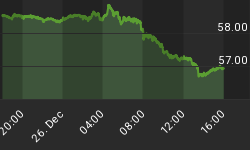There is little doubt the economic recovery has been rather uneven. Deleveraging is in progress. Small business, the economic growth engine of the country, continues. For the week of October 10-16 there were some 160 incorporations of business in the St. Louis and St. Charles County region. This is great news. The reality, however, is that many of these formations will experience cash flow problems that ultimately lead to voluntarily dissolving the enterprise or worse.
The "worse" is the imposition of the civil court system on the lives of those entrepreneurs. The courts only get involved when a financial matter becomes a legal one. In my experience, most small businesses operate with a very narrow financial factor of safety. That means that everything must go right in order for the business to survive. Disruptions of cash flow begin the process of debt deferral - the business owner is late with a creditor obligation. Sometimes the disruption is caused within the context of the business itself. Perhaps weather caused problems or maybe the business is owed money for goods/services provided. Do not discount the personal angle. Child illness, a death in the family, divorce or an illness to the proprietor or key personnel can often cripple a small enterprise.
Before non-payment leads to legal action, small companies react by paying the creditor who makes the most noise or is the most persistent. While that might alleviate the immediate stress, it may not ultimately help in utilizing cash flow most effectively. Prioritizing debt repayment thus emerges as yet another skill required by small business. At some point the juggling act becomes untenable and the business owner feels stress in their professional and personal life. No matter what the owner does, they feel like the actor in the Spiriva commercial with the elephant on their chest - they figuratively cannot breathe.
Ideally, the debt can be restructured ahead of litigation. Using the services of a debt restructuring consultancy can be of value. Yes, it is possible for the business owner to engage in this process on their own. Like any other business service, however, there are a multitude of reasons for allowing a professional to handle this important function, not the least of which is the removal of personal emotion from a difficult negotiation.
If the matter turns legal, the professional debt restructuring option remains a viable alternative. The key is to have a non-adversarial discussion with the creditor's attorney and offer a candid assessment of the business owner's financial condition. This can only occur with a thorough review of the business financials and their operation. At this juncture, capital acquisition may be an integral part of the debt restructuring solution. Once again, it is important to have good financial information prior to undertaking this step.
Out of court settlement is a preferred path when business finds itself in this predicament. Creditors have an interest in getting as much cash as possible in the shortest amount of time. There may even be an interest in continuing the business relationship. If the business intends on pursuing the matter through the courts, the probability of a true financial resolution tends to diminish. Unless there is truly a dispute on the amount or existence of the debt, the court deems that the facts are incontrovertible and the defendant will lose the case. Many times, a business ignores the suit and will have a default judgment against it. Creditors will not look favorably on a business with funds to spend on attorneys versus funds to retire debt.
I will also caution business owners about hiding behind a limited liability corporation (LLC). While a properly structured LLC offers creditor protection it is important to segregate business and personal activity otherwise the corporate veil may be pierced. Creditors understand LLC protection which is why they often request a personal guaranty. In these cases, both the business and individuals face litigation, thus expanding the importance of an out of court settlement.
If the matter is not resolved in the first stage of litigation, bankruptcy usually follows. Chapter 11 bankruptcy is an option for businesses wishing to restructure debt and continue operation if the business entity is a partnership, LLC or corporation. Chapter 11 bankruptcy may arrive at the same financial outcome as the out of court debt restructuring noted earlier. Chapter 11 bankruptcy is costly, time-consuming and certainly complex. These factors alone are salient reasons for engaging a business restructuring practice - the business accomplishes the same thing, quicker and probably under better terms. Depending on the number and composition of creditors, they may prefer taking a debtor into Chapter 11.
The other bankruptcy option is Chapter 7. This is a liquidation whose aim is to wipe out unsecured debt. Qualification for Chapter 7 implies little or no income. As you might surmise, this is also a costly option. With Chapter 7, the court appoints a trustee to liquidate (sell) nonexempt property to make some restitution to creditors. If there aren't any non-exempt assets, the creditors receive nothing. Chapter 7 bankruptcy will also eviscerate the business owner's credit.
Creditors have few alternatives under the legal system to seek financial restitution other than forcing litigation. The courts are not well-suited towards resolving small business financial disputes particularly when the debts are known and acknowledged. There may exist a whole host of reasons why a business cannot meet its debt obligations. The ultimate goal of a small business debt restructuring is to save the business and ultimately preserve jobs, families and communities. You never know which of these small businesses will grow into a major employer.
















